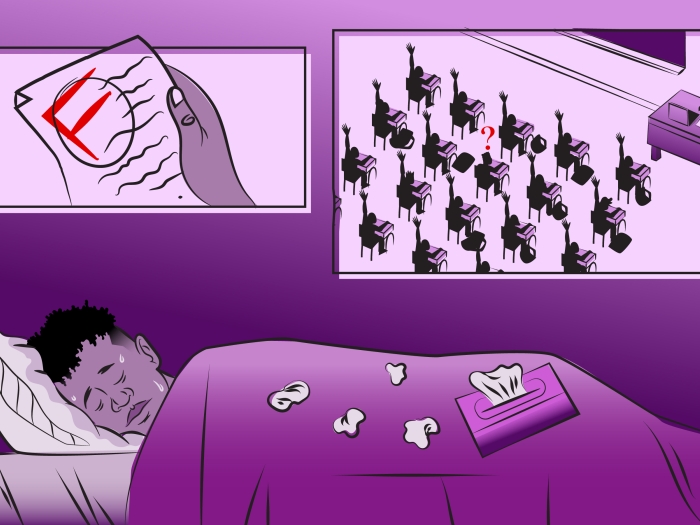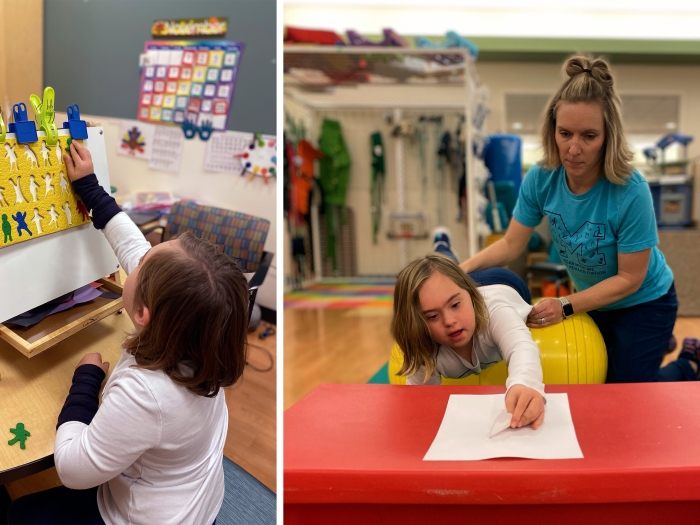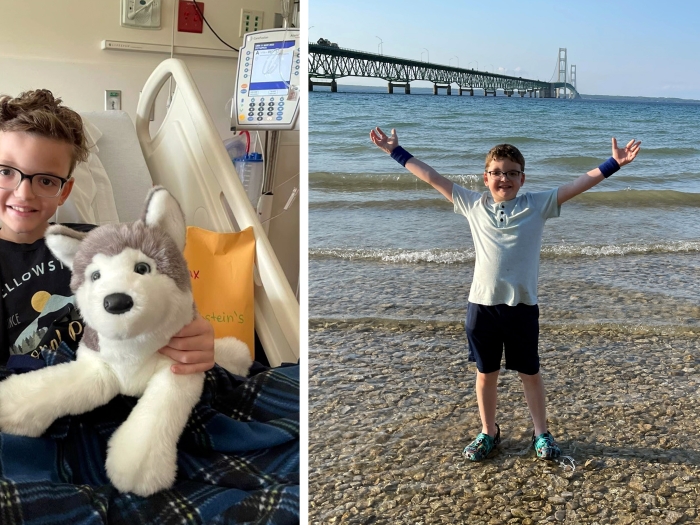Children with feeding tubes often are at the highest risk of pulling out the devices. A new tube invented at U-M could prevent that problem.
8:00 AM
Author |
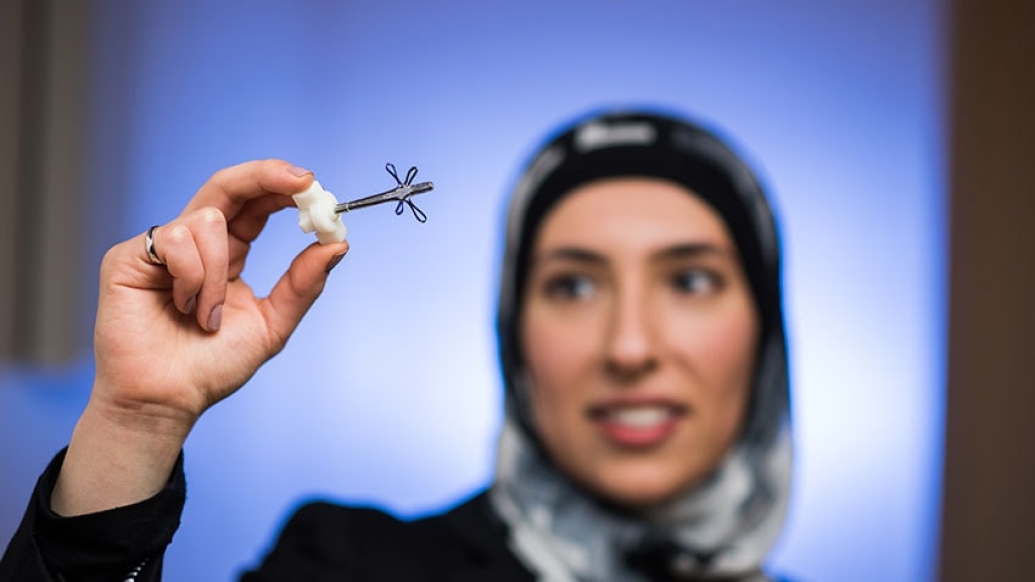
The insertion of a feeding tube, in many circumstances, can be traumatic for children — with the procedure more prone to complications than in adults.
SEE ALSO: Are Schools Prepared to Save Lives?
By accident or intention, kids are likelier to tug at or dislodge the device. And when a water-filled balloon inside the stomach that holds the tube in place falls out, time is of the essence: A tiny surgical hole in the skin can begin to heal within just a few hours, making delayed re-insertion painful and, in repeat cases, costly.
Challenging, too, is the fact that many children who require a feeding tube may also have neurological or developmental difficulties that prevent them from noticing or letting an adult know when something is wrong.
"That creates a layer of burden for the clinician, the caregiver and the patient," says Saja Al-Dujaili, Ph.D., a biomedical engineer with the Michigan Pediatric Health Consortium (M-PED) — a nonprofit, federally funded organization that works to target and solve problems in children's health care using new technologies created by University of Michigan specialists.
Which is why the Buddy Button was created.
The polymer tool, a device under exclusive development at C.S. Mott Children's Hospital, lies flush with the skin and resembles the design of a drywall screw by going in narrow before expansion.
There isn't a balloon for support (that's by design; stomach acid is known to cause ruptures or leaks). Nor does it involve external tubing that could find its way into tiny hands or come loose during sleep.
"It doesn't stick out," Al-Dujaili says. "There are no nooks or crannies to pull on."
She and her team have been working on the project for two years. Developed with $250,000 in funds from U-M and the Food and Drug Administration, the Buddy Button isn't yet commercially available as its creators refine and prepare it for potential use.
But the objective, to reduce hospital visits and incidents related to feeding tube dislodgment, is within reach.
"If we can provide that extra layer of protection, a little bit of comfort, that's a huge, huge value," Al-Dujaili says. "It's one less thing for parents to worry about."
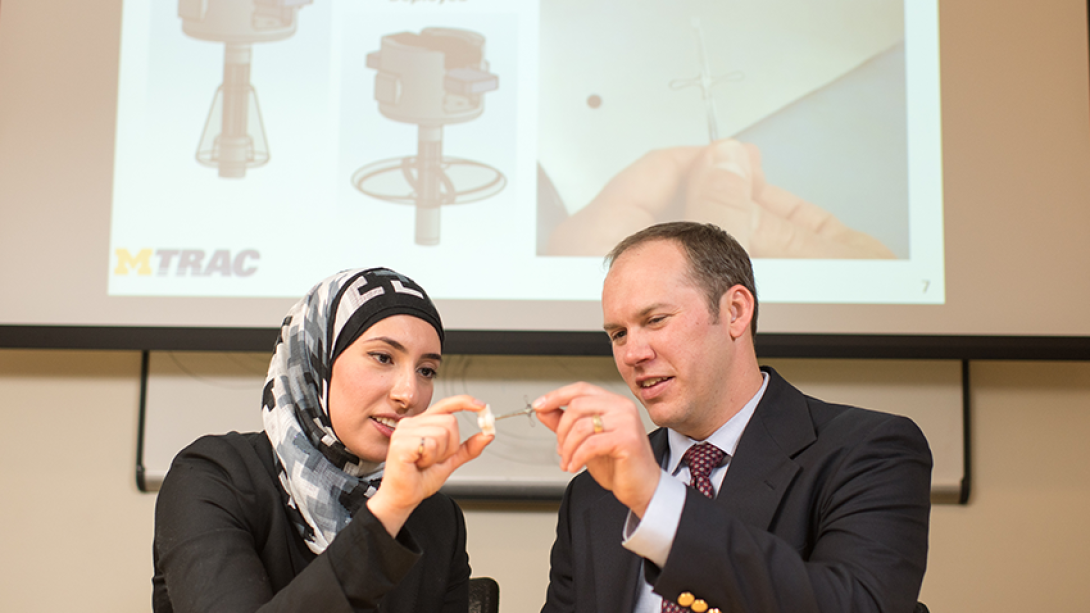
Saving time and worry
As practiced with a typical feeding tube (otherwise known as a gastrostomy tube, or G-tube), a similar incision of about 5 millimeters would be required to insert the Buddy Button.
The device itself measures about 2 centimeters long and 4 millimeters in diameter.
Although the idea was conceived with pediatric patients in mind, the Buddy Button might be used on some adults — particularly, Al-Dujaili says, adults with dementia or others at risk of pulling out a standard feeding tube.
If we can provide that extra layer of protection, a little bit of comfort, that's a huge, huge value. It's one less thing for a parent to worry about.Saja Al-Dujaili, Ph.D.
Other benefits
Beyond making the design more comfortable and less prone to disruption, the product could offer substantial cost savings.
SEE ALSO: Doctors Unleash New Weapon to Fight Pediatric Neuroblastoma
At present, conventional G-tubes need to be changed out to ensure cleanliness every three months — a cost accounted for in most insurance plans. Many kids, however, might require monthly maintenance due to frequent and unplanned dislodging.
As such, "A lot of these costs end up being eaten by the hospital system or the families," Al-Dujaili says. "If you translate that to maybe 10 or 12 (annual incidents), it's a significant financial burden."
Based on her own research, Al-Dujaili says that complications associated with conventional G-tubes in the United States can cost as much as $250 million yearly.
Because the Buddy Button was designed to circumvent the issues that affect its predecessor, it would only need to be changed out every six to eight months — half as frequently as a typical G-tube. Non-emergency swaps of the Buddy Button also could be done at home.
"It's one thing to have a device that doesn't fail as often; you also want people to be able to use it as easily as the existing one," Al-Dujaili says.
A provisional patent has been filed to move the Buddy Button forward.
The next step: either licensing the device to a medical-device manufacturer to commercialize the technology or forming a startup company outside the university to launch the regulatory and marketing processes.
The Buddy Button team at M-PED, which includes Al-Dujaili; Jonathon Campbell; Farokh Demehri, M.D.; and Tina Thomas, M.D., hopes to advance to either scenario within the next year.

Explore a variety of healthcare news & stories by visiting the Health Lab home page for more articles.

Department of Communication at Michigan Medicine
Want top health & research news weekly? Sign up for Health Lab’s newsletters today!


